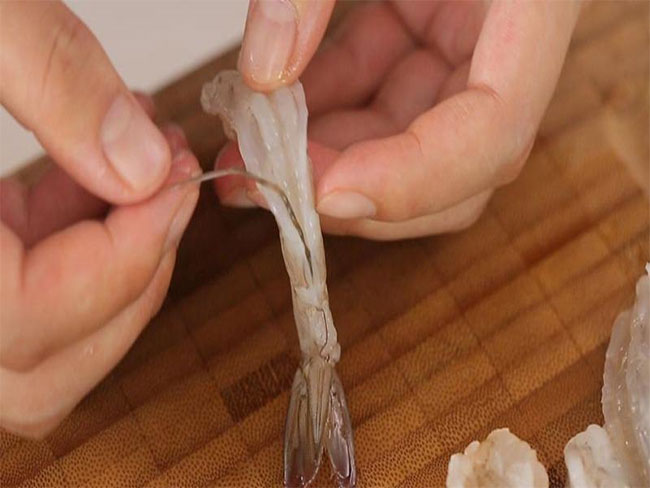Shrimp is an extremely popular seafood worldwide with increasing consumption rates. This soft-bodied crustacean is considered delicious and can be prepared in various ways. The thin strand running along the shrimp’s back is its digestive tract, and the small black specks are its waste.
The black strand on the shrimp’s back is its digestive tract
Shrimp are creatures with an open circulatory system. The long black thread you often see running along the back of the shrimp is its digestive tract, and the small black spots you notice are shrimp waste. If you happen to eat it raw, the bacteria in the waste can cause some health issues. Therefore, it is safer to cook shrimp before eating.
If you have ever eaten peeled raw shrimp, you may have unknowingly consumed some of the shrimp’s waste without realizing it. Except for very large shrimp with easily visible digestive tracts, in most cases, you cannot see this black thread from the outside unless you “slice” it open.

The black strand commonly seen along the back of shrimp.
Why should you remove the black strand on the shrimp’s back before eating?
Although shrimp waste is one of the forms of “benign” waste and causes minimal discomfort, it is still animal feces, and no one encourages eating “feces.” Additionally, from an aesthetic standpoint, if you eat shrimp that includes waste, it may stick to your teeth, especially with larger shrimp.
The easiest way to address this issue is to buy shrimp that has been properly cleaned and cooked, allowing you to eat it without worry since most of the shrimp waste has been removed. This may cost a bit more as you are essentially paying for someone else’s labor. However, if you accidentally purchase shrimp with a black stripe on its back, you can remove it before or after cooking.
How to prepare raw shrimp
Removing the digestive tract along the shrimp’s back is quite easy, although this task can be tedious and tiresome. From the shrimp’s head position, make a cut through the shell from the back of the shrimp to the base of the tail using a peeler or sharp scissors, then separate the shell from the meat, removing the black thread using a sharp tool like a knife or a small skewer, and repeat similarly with the rest of the shrimp. Follow the detailed instructional video below.
How to remove the digestive tract from cooked shrimp
The cleaning process for cooked shrimp is similar to that for raw shrimp. After cooking the shrimp, chill it for a moment, then cut along the line on the shrimp’s back, split it open, and pull the black thread out. The smaller the shrimp, the more difficult this cleaning process will be; however, you will need to be careful and meticulous to ensure that the shrimp is free of waste before eating.


















































